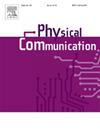针对支持mec的物联网网络的智能轻量级物理层认证方案
IF 2.2
4区 计算机科学
Q3 ENGINEERING, ELECTRICAL & ELECTRONIC
引用次数: 0
摘要
本文提出了一种轻量级的基于三层卷积神经网络(3L-CNN)的物理层认证(PLA)方法,用于支持移动边缘计算的物联网(MEC-IoT)网络。建立了一种新的通道状态信息(CSI)处理体系结构,将实、虚分量转换成分辨率为64×64的双通道图像作为网络输入。提出了平均数据增强(ADA)和指数加权平均(EWA)两种数据增强技术,增强了移动场景下的时间相关性保存和移动模式提取,有效缓解了移动设备训练数据的稀缺性。核心3L-CNN架构保持精简,通过64×8, 32×16和6×32配置的三个卷积层采用渐进式特征提取,并通过结合50%负对数似然和50%交叉熵的混合损失函数进行优化,以细化分类边界。该体系结构在10个设备配置上的认证准确率为99%,在30个设备配置上的认证准确率为96.6%。它还表现出优异的鲁棒性,在0 dB信噪比下具有95%的精度。这种轻量级解决方案实现了与复杂模型相当的性能,同时减少了66%的训练时间,使其适用于资源受限的移动边缘计算支持的物联网应用。本文章由计算机程序翻译,如有差异,请以英文原文为准。
An intelligent and lightweight physical layer authentication scheme for MEC-enabled IoT networks
This paper proposes a lightweight Three-Layer Convolutional Neural Network(3L-CNN) based physical layer authentication (PLA) method for mobile edge computing-enabled IoT (MEC-IoT) networks. A novel channel state information (CSI) processing architecture is established where real and imaginary components are transformed into two-channel images with 64×64 resolution for network inputs. Two data augmentation techniques, Average Data Augmentation (ADA) and Exponentially Weighted Average(EWA) are developed, to enhance temporal correlation preservation and mobility pattern extraction in mobile scenarios, effectively mitigating training data scarcity for mobile devices. The core 3L-CNN architecture remains streamlined, employing progressive feature extraction through three convolutional layers with 64×8, 32×16, and 6×32 configurations, optimized by a hybrid loss function combining 50% Negative Log-Likelihood and 50% Cross-Entropy to refine classification boundaries. The architecture demonstrates 99% authentication accuracy for 10 devices configuration and maintains 96.6% accuracy for 30 devices respectively. It also exhibits superior robustness with 95% accuracy at 0 dB SNR. This lightweight solution achieves comparable performance to complex models while reducing training time by 66%, making it suitable for resource-constrained mobile edge computing-enabled IoT applications.
求助全文
通过发布文献求助,成功后即可免费获取论文全文。
去求助
来源期刊

Physical Communication
ENGINEERING, ELECTRICAL & ELECTRONICTELECO-TELECOMMUNICATIONS
CiteScore
5.00
自引率
9.10%
发文量
212
审稿时长
55 days
期刊介绍:
PHYCOM: Physical Communication is an international and archival journal providing complete coverage of all topics of interest to those involved in all aspects of physical layer communications. Theoretical research contributions presenting new techniques, concepts or analyses, applied contributions reporting on experiences and experiments, and tutorials are published.
Topics of interest include but are not limited to:
Physical layer issues of Wireless Local Area Networks, WiMAX, Wireless Mesh Networks, Sensor and Ad Hoc Networks, PCS Systems; Radio access protocols and algorithms for the physical layer; Spread Spectrum Communications; Channel Modeling; Detection and Estimation; Modulation and Coding; Multiplexing and Carrier Techniques; Broadband Wireless Communications; Wireless Personal Communications; Multi-user Detection; Signal Separation and Interference rejection: Multimedia Communications over Wireless; DSP Applications to Wireless Systems; Experimental and Prototype Results; Multiple Access Techniques; Space-time Processing; Synchronization Techniques; Error Control Techniques; Cryptography; Software Radios; Tracking; Resource Allocation and Inference Management; Multi-rate and Multi-carrier Communications; Cross layer Design and Optimization; Propagation and Channel Characterization; OFDM Systems; MIMO Systems; Ultra-Wideband Communications; Cognitive Radio System Architectures; Platforms and Hardware Implementations for the Support of Cognitive, Radio Systems; Cognitive Radio Resource Management and Dynamic Spectrum Sharing.
 求助内容:
求助内容: 应助结果提醒方式:
应助结果提醒方式:


